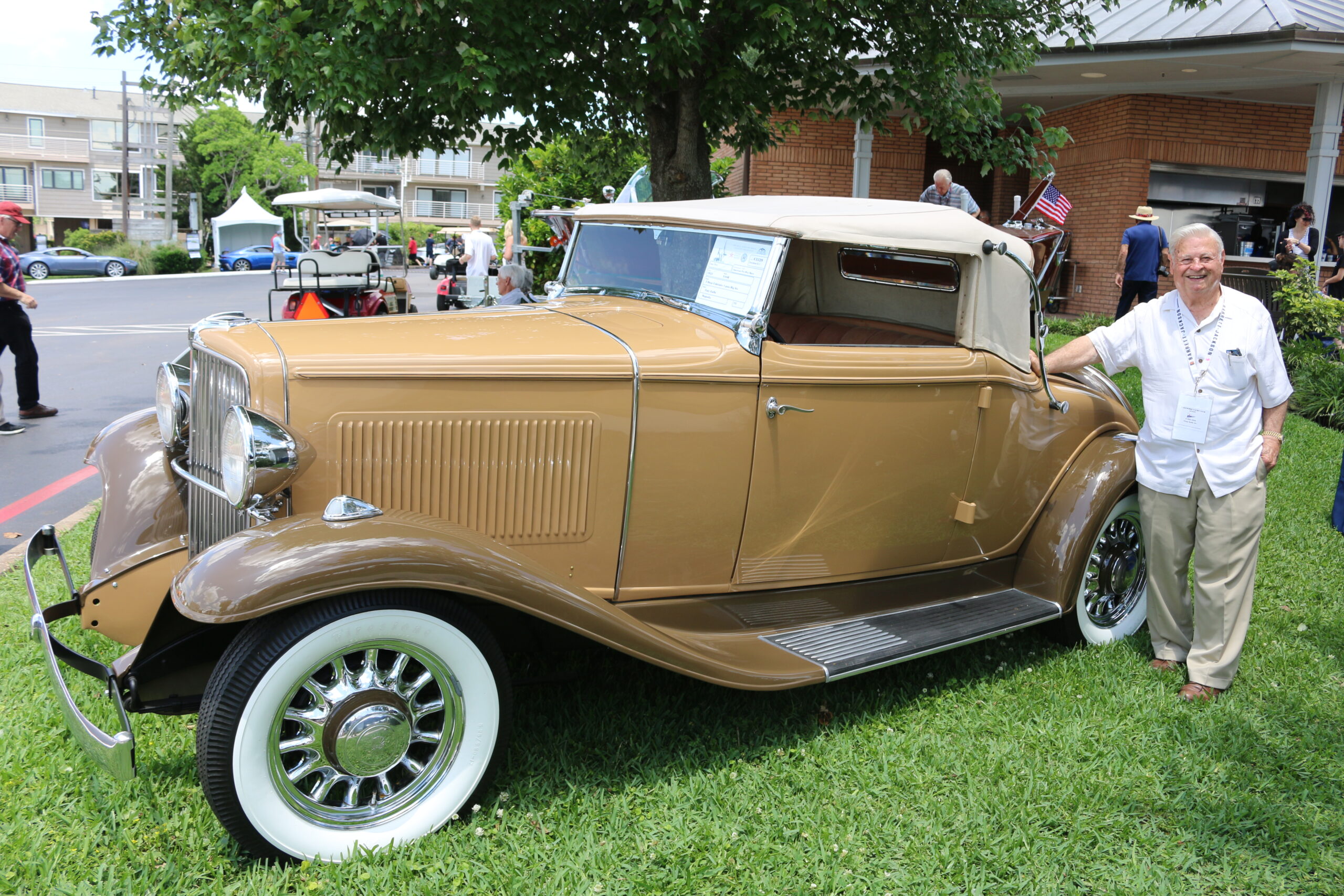


“Blue Baby” ‘36 Cadillac blessed with beautiful life
By Greg Riley Houston, TX
Car dealer David Taylor thought he had heard it all. He received almost countless classic car leads each week through his dealership and through his car museum, David Taylor Classics of Galveston Island, Tex. Most cars were run-of-the-mill collectibles with no particular interest to him or place in his collection. This time was different, as the lead came from his cousin stockbroker David Moorman of Taylor’s hometown of Port Arthur, Tex. Moorman’s colleague in Dallas had mentioned in passing that he had recently inherited a 1936 Cadillac. Would David Taylor be interested? Perhaps, but he wanted more details. After Moorman called back, Taylor began to get very excited. It seems that this wasn’t a run-of-the-mill 1936 Cadillac. This was a 1936 Model 80 V-12 convertible coupe. Taylor was skeptical, after talking to several respected Cadillac experts, as it was widely accepted that only three of these cars were known to exist. Cadillac built only 901 Model 80s in 1936, with only 21 being convertible coupes. This was also the first year that Cadillac put the mighty 368-cid, 150-hp V-12 in the shorter 131-inch wheelbase chassis, creating a virtual rocket ship. If another had really been discovered, this would be quite a coup and a fantastic addition to Taylor’s 50-car collection. Once Taylor got into contact with the current owner, his excitement reached a fever pitch.
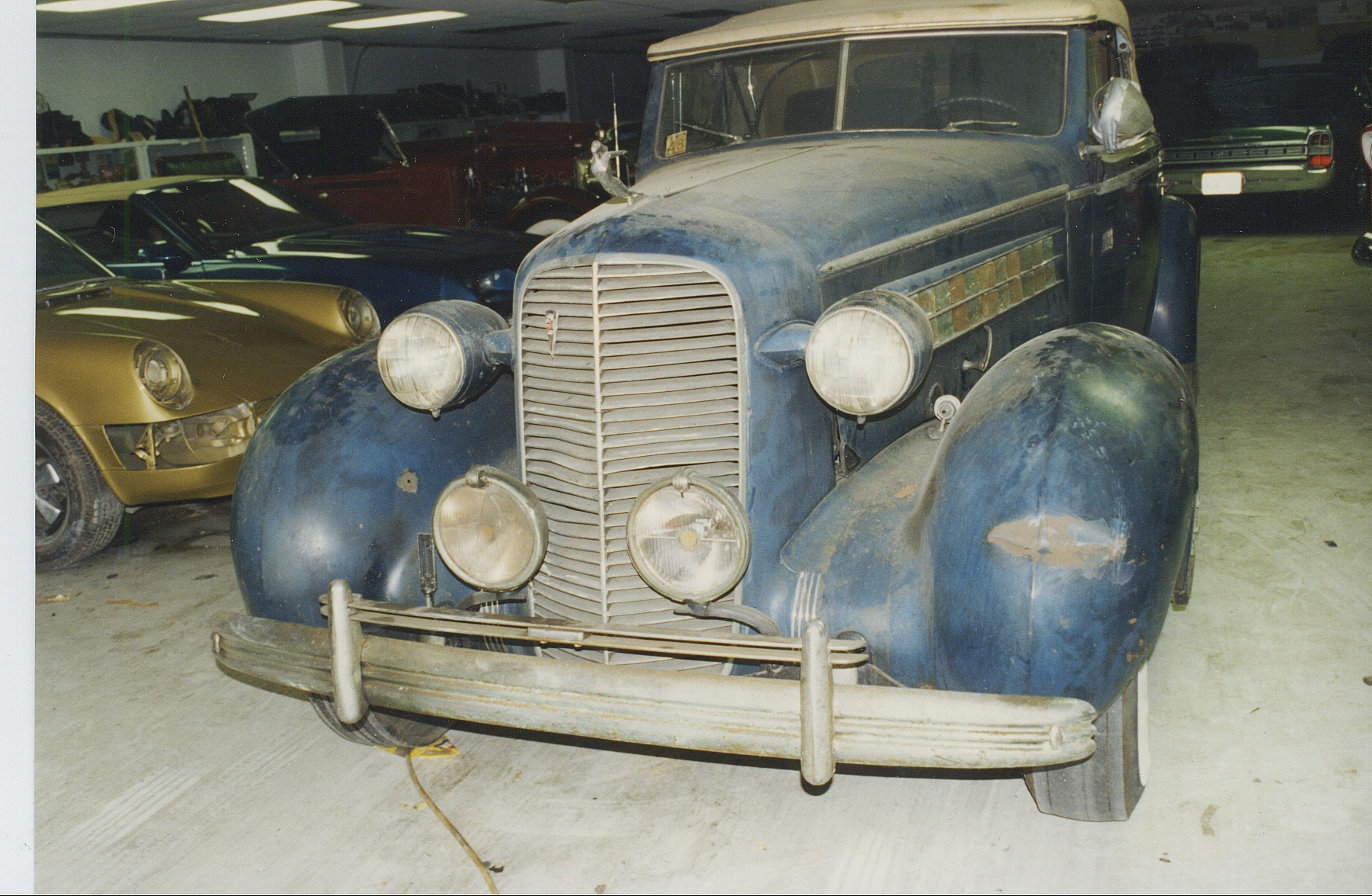
The Cadillac had been owned from April., 1939, until his death in the 1990s by Boston playboy Lymon Olmsted. Lymon’s half-brother, Eric Greenfield, said the car had been stored indoors under cover from 1948 until 1995, had only about 56,000 miles and was in untouched original condition. Immediately after hearing the details, Taylor called his best friend, master restorer Bill Wallace, and brought him up to speed. A few days later, Taylor and Wallace were huddled around a TV watching a tape of this incredible find. They couldn’t believe what they were seeing. The car was a virtual time capsule in untouched condition. It was better than they could have imagined in their wildest dreams. The paint, upholstery and top were original. There didn’t appear to be a speck of rust, and only the slightest body damage.

The 1936 Cadillac Model 80 as it arrived to David Taylor
Taylor immediately called back and agreed to buy the car sight unseen. Shipping would take six weeks, and Taylor was on pins until the car arrived. Later, Eric Greenfield began telling Taylor details of his half-brother and the amazing Cadillac. Lymon Olmsted was named Lymon Howard Buck Greenfield at his birth in 1908. His mother, Gudrida Buck Greenfield, was the daughter of a self-made farmer, merchant and stock trader named Howard Buck. Buck started out in life penniless but began making money performing backbreaking manual labor with a horse and sled in up-state New York. One day, Buck heard that government bonds paid 3 percent interest. That day, his life changed, and he began a career in securities that made him exceedingly wealthy. Very soon, the family was living in a 40-room mansion on exclusive Brattle Street in Cambridge, Mass.
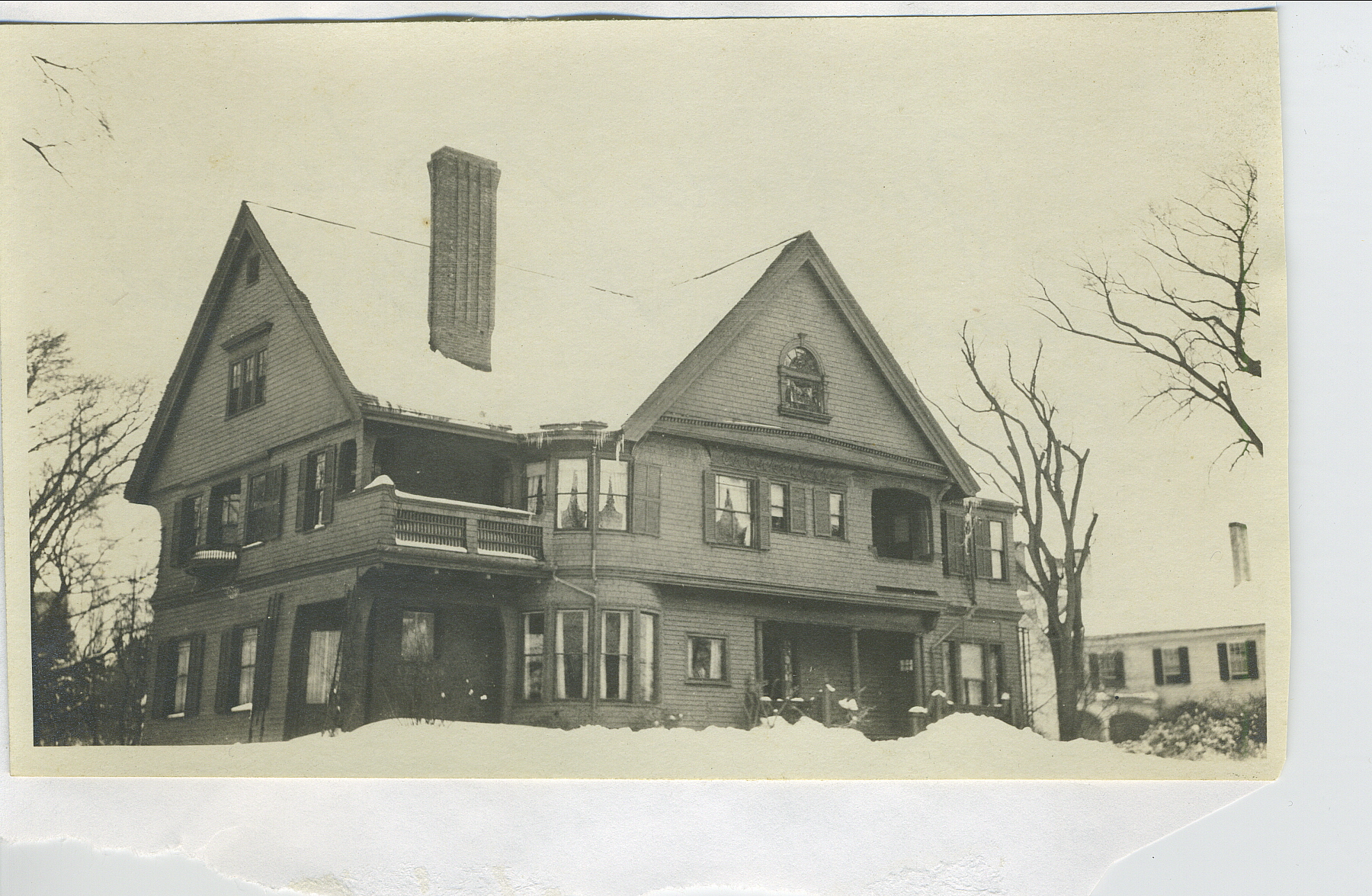
The Buck Manion in Cambridge, MASS
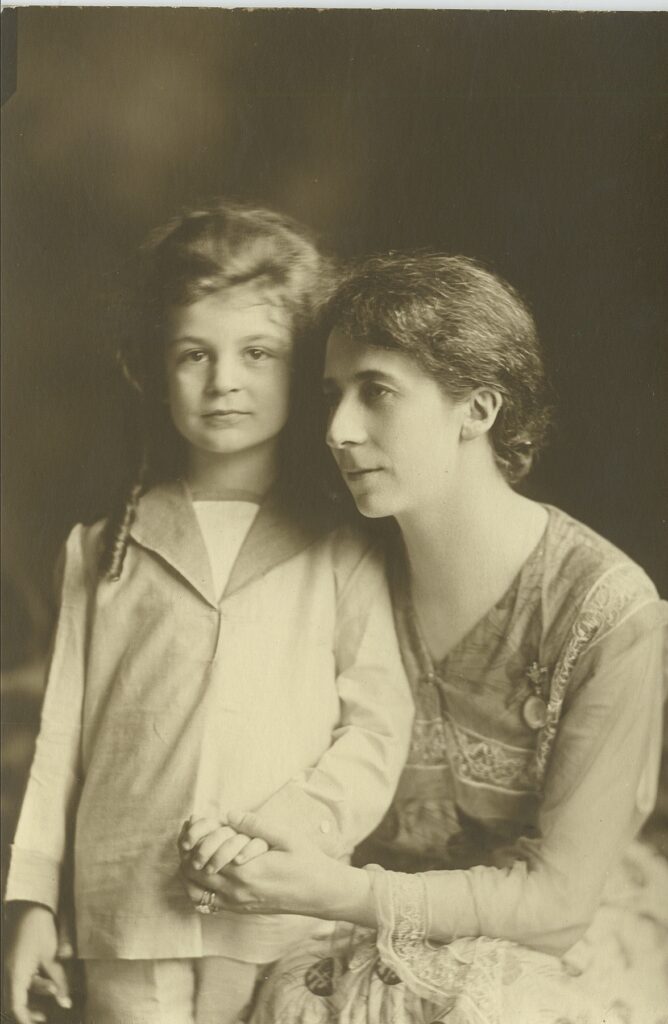
Lymon’s mother was the flamboyant Gudrida Buck Greenfield Cook. Her first marriage was to Dr. Eric Viele Greenfield. Dr. Greenfield, a professor of languages, was an extremely learned man who authored textbooks in German, French, Portuguese and Spanish. Lymon was born during Dr. Greenfield’s tenure at Purdue University. After about 10 years, Gudrida tired of life in Indiana and returned to Boston with young Lymon in tow.
Once there, she filed for divorce from Dr. Greenfield, seeking sole custody of Lymon. She asked for several unusual items in her divorce. The first was that Dr. Greenfield would be barred by the court from remarrying until after Gudrida died. The second was that Lymon would no longer carry the Greenfield name. In an unusual move, Gudrida allowed Lymon to choose his own name. Eric Greenfield is in possession of papers from the Massachusetts Supreme Court ordering that Gudrida’s wishes be carried out. Gudrida eventually did re-marry a Harvard anthropology professor, Mr. Cook. Lymon would have no further contact with his father until he was a grown man of 40. At that time, both men embarked on a great odyssey in the Cadillac. They became reacquainted while trouncing New England and up-state New York. Dr. Greenfield retired to Venice, Fla., where Lymon frequently visited him until his death at 93.
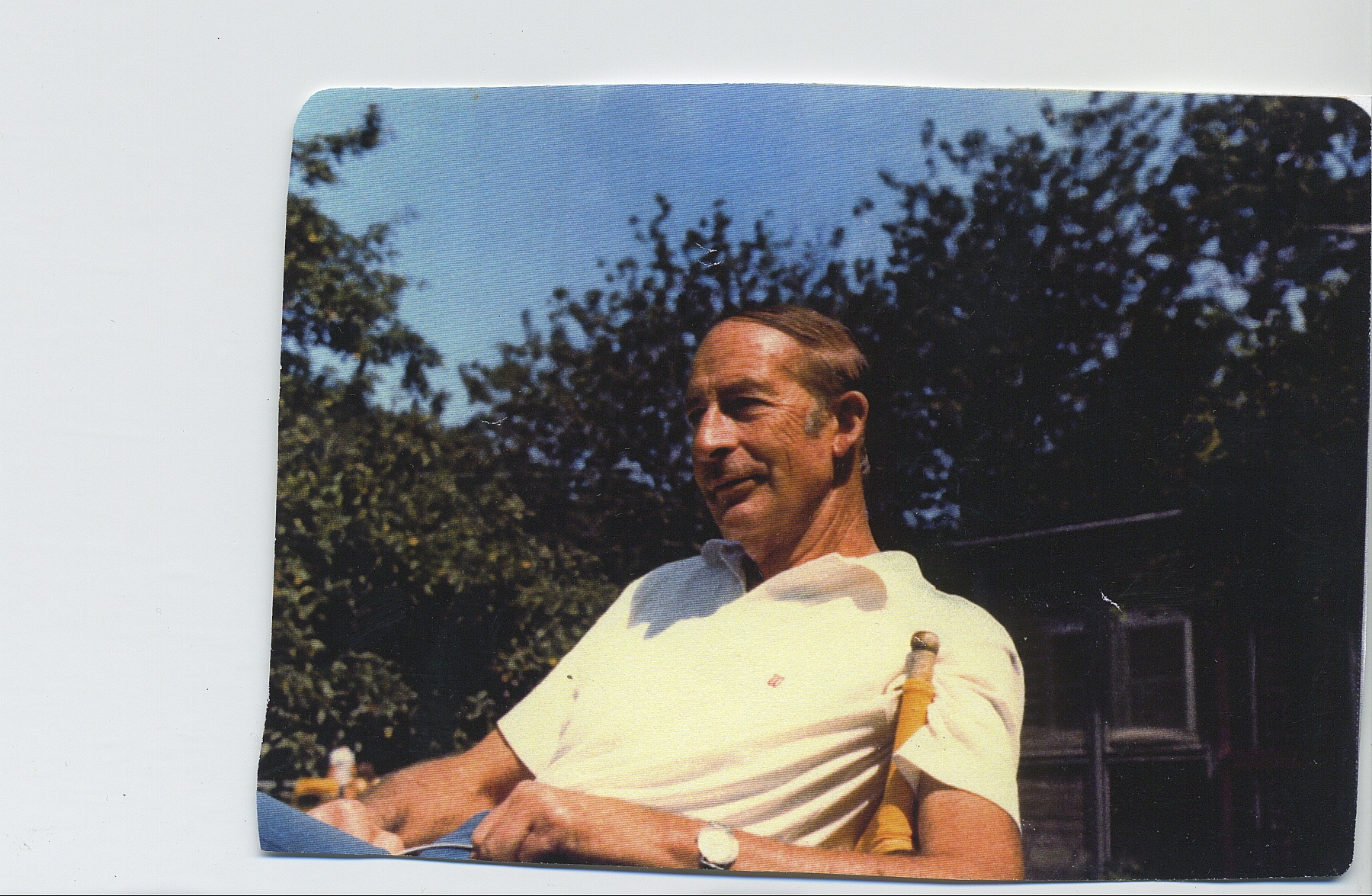
Lymon Olmsted in later life
After the divorce, young Lymon opted to take the surname of his favorite teacher. Henceforth, Lymon would be known as Lymon Howard Buck Olmsted. Gudrida spent her money freely and didn’t see the need for Lymon to receive a higher education, so he never graduated from high school, much less attended the Ivy League schools of his friends. On Apr. 18, 1939, Lymon purchased the lightly used Cadillac for about $800 (a far cry from the original price of $3,395) from The Cadillac Automobile Company of Boston, and, as Lymon would say, “The girls loved it!” Lymon told Eric that once he test-drove it and felt the smoothness and power of the V-12, he had to have it. The 6-foot, 5-inch Lymon immediately christened her “Blue Baby.” Lymon never worked, and was once heard to comment, “Why would I work? It’s much more fun to play tennis and travel.” Dates and appointments appear to have held little meaning for Lymon. If he had an appointment, he might show up several hours late, or not at all. Lymon was seldom seen at a social gathering without a cocktail in his hand and a beautiful woman at his side. Eric Greenfield has scores of pictures of Lymon with beautiful women from the U.S., Caribbean, and France.
Lymon was a celebrated member of the exclusive Harvard Club, and American’s oldest tennis club The Longwood Cricket Club. He counted Boston’s most elite among his friends. He was also the former tennis singles champion of Massachusetts and the squash racquet champion of New England. Lymon loved Palm Beach and was a frequent participant in the South Florida social scene. Although the world around him was segregated, Lymon was color blind, particularly where beautiful women were concerned. Once, in Florida, Lymon desired to take the train home to Boston, but what to do with the Cadillac? A new acquaintance, a beautiful African American woman, offered to drive it back. Lymon agreed without hesitation. His friends were aghast, as he couldn’t even remember the woman’s given name. Lymon was completely confident that the car would arrive unscathed, and so it did, several weeks later. One can only imagine the hardships the woman might have experienced had she encountered a small-town sheriff while driving the car with Massachusetts license plates. After Pearl Harbor, Lymon enlisted in the Army. Lymon loved the structure of military life, but Gudrida was scandalized that her son was a lowly enlisted man. Numerous letters to Lymon show that Gudrida used every family and social connection possible to have Lymon elevated, all to no avail.
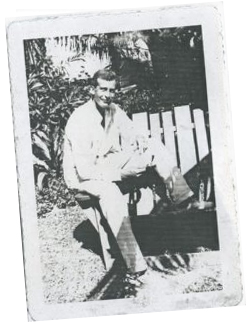
Lymon Olmsted as a young man.
Lymon spent quite a bit of time in France and was assigned to Joe Louis on his tour of armed forces camps. This was no doubt due to his fluency with the language. After the Lymon was a celebrated member of the exclusive Harvard Club, and American’s oldest tennis club The Longwood Cricket Club. He counted Boston’s most elite among his friends. He was also the former tennis singles champion of Massachusetts and the squash racquet champion of New England. Lymon loved Palm Beach and was a frequent participant in the South Florida social scene. Although the world around him was segregated, Lymon was color blind, particularly where beautiful women were concerned. Once, in Florida, Lymon desired to take the train home to Boston, but what to do with the Cadillac? A new acquaintance, a beautiful African American woman, offered to drive it back. Lymon agreed without hesitation. His friends were aghast, as he couldn’t even remember the woman’s given name. Lymon was completely confident that the car would arrive unscathed, and so it did, several weeks later. One can only imagine the hardships the woman might have experienced had she encountered a small-town sheriff while driving the car with Massachusetts license plates. After Pearl Harbor, Lymon enlisted in the Army. Lymon loved the structure of military life, but Gudrida was scandalized that her son was a lowly enlisted man. Numerous letters to Lymon show that Gudrida used every family and social connection possible to have Lymon elevated, all to no avail. Lymon spent quite a bit of time in France and was assigned to Joe Louis on his tour of armed forces camps. This was no doubt due to his fluency with the language. After the war, Lymon resumed his sporting lifestyle and used the Cadillac extensively until 1948. For an unknown reason, Lymon parked the car at that time, but would never sell it. He would show up at the storage facility about every five years to revive the car, and it never failed to start. In 1942, Lymon married Jean Nash, who today would be described as a tennis pro. Both Lymon and Jean were regulars at the most exclusive tennis clubs in the Northeast, particularly in Cape Cod. They were both regulars at the Longwood Cricket Club, where they probably met.
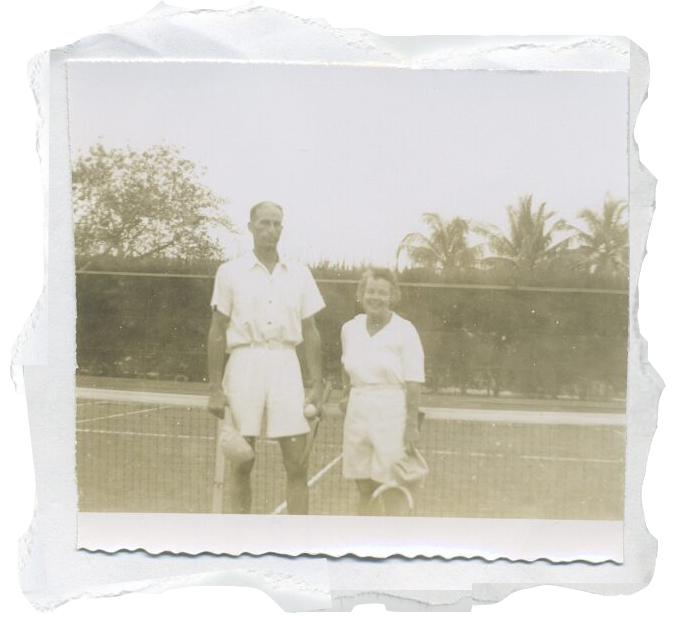
Lymon and the love his life Jean Nash
Lymon, Jean, and her two children from a previous marriage established a tennis camp and retreat at Brewster, Mass., adjacent to Cape Cod, which they named The Four Seasons Plus. Families would come to learn tennis and spend time on beautiful Cape Cod Bay. Lymon loved this period of his life and reveled in it. He personally cared for Jean during two years of debilitating illness. Upon her death, Lymon became a lost soul of sorts. His mother and guiding force Gudrida had died several years earlier, and the death of both women seems to have left him rudderless. Lymon began living with his aunt Lucy Greenfield on the New Jersey shore at Longbranch. The family summer home was there, and the exclusive enclave had formerly been a summer retreat for seven presidents and countless dignitaries. Lymon no doubt felt right at home in the ambiance of fading elegance. Lymon’s own star was fading as well.
Mismanagement of his assets by his financial advisors during his World War II army tour and subsequent unabated spending had diminished his circumstances considerably. Over the years, countless people had asked about the Cadillac, and Lymon always promised them that they would be the one to have it after his passing. This was not done to mollify the person making the request, rather Lymon thought it rude to answer in the negative.

The Garage where Blue Baby hibernated After Lymon’s death, no one seemed to know what had become of the Cadillac. The keys had been misplaced in the early 1970s, and now the car itself was seemingly lost. Eventually, the car was located by the family attorney. The gentleman who had stored it for so many years was very understanding, although Lymon hadn’t remembered to pay the storage bill for many years. Once the car arrived in Houston, Taylor was on hand to supervise the unloading. Taylor was later quoted as saying, “It was a better car than we ever expected. It had never been tampered with mechanically, so we knew we’d found an excellent vehicle to restore.” It was immediately decided that the car should receive a ground-up, no-expense-spared restoration with the goal of winning at the CCCA Grand Classic and perhaps, eventually, Pebble Beach.

Blue Baby prior to restoration at Wallace Antique Auto Wallace recently related a funny story concerning the grille. The grille was one of the few damaged parts on the car. Taylor called all of the usual sources looking for a grille. It was soon obvious that this would be a virtually impossible part to locate. Taylor’s solution was to offer a $5,000 reward for information leading to the purchase of an NOS grill or a repairable used one. He didn’t receive even one lead. Wallace’s solution was to manufacture a new grille from scratch. During judging at a CCCA Grand Classic, a judge was heard to comment that this was the most perfect grill he had ever seen. This is just one testament to Wallace’s awesome restoration talent. Your author personally witnessed Wallace manufacture the bumper guards from billet stock. Taylor wanted the restoration completed in record time. It was eventually necessary to purchase several other 1936 Cadillacs to obtain the rare and missing parts. The parts that couldn’t be purchased were lovingly made by Wallace. After the first showing, only some windshield trim screws were judged as non-original. Taylor immediately purchased a derelict 16-cylinder parts car just to obtain the correct screws. During the 1996 and 1997 show season, the car won top-honor awards everywhere it was shown. Wins included those at national Cadillac LaSalle Club, Antique Automobile Club of America and Classic Car Club of America meets.
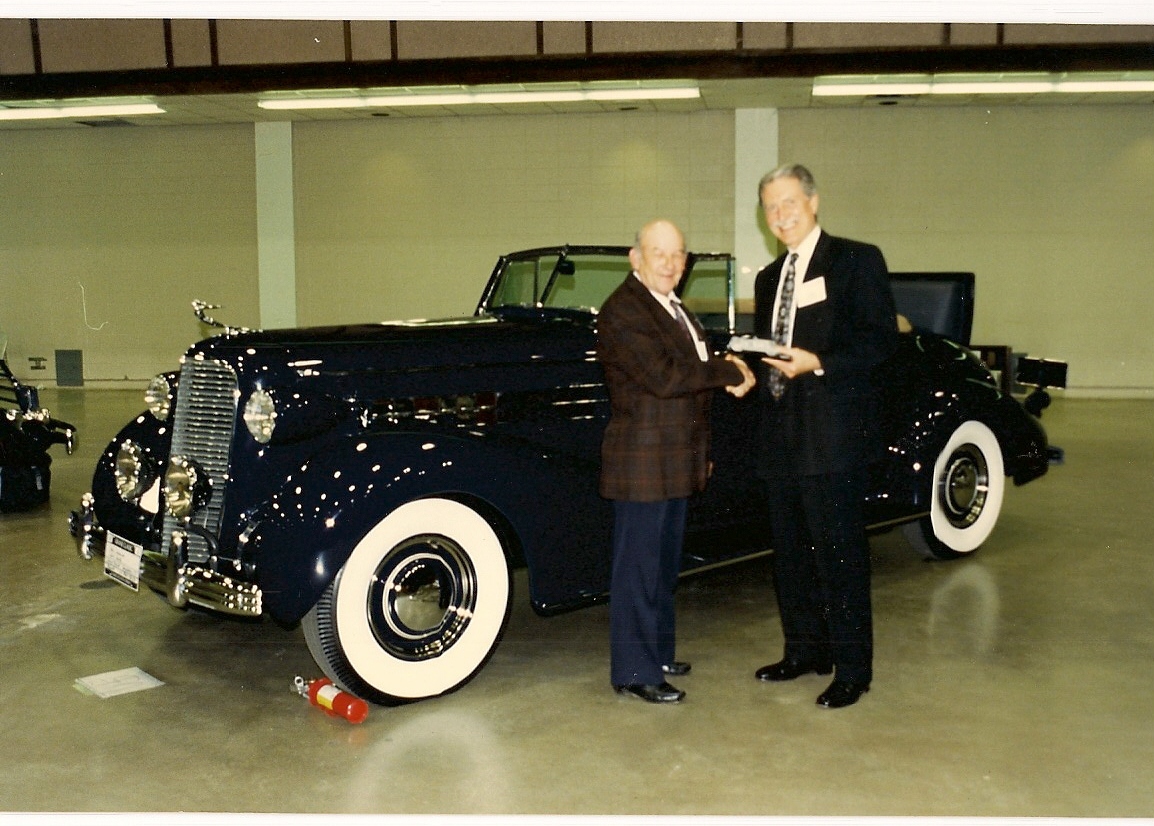
David Taylor and Bill Wallace at the CCCA Grand Classic
Sadly, David Taylor passed away unexpectedly in October, 1997. Jo-Beth Litwin, his former curator, reveals that the car was to have been shown at Pebble in August, 1997, but Taylor’s deteriorating health made this exhibition impossible. Shortly thereafter, Bill Wallace suffered a debilitating stroke that left him unable to pursue his lifelong vocation of auto restoration.
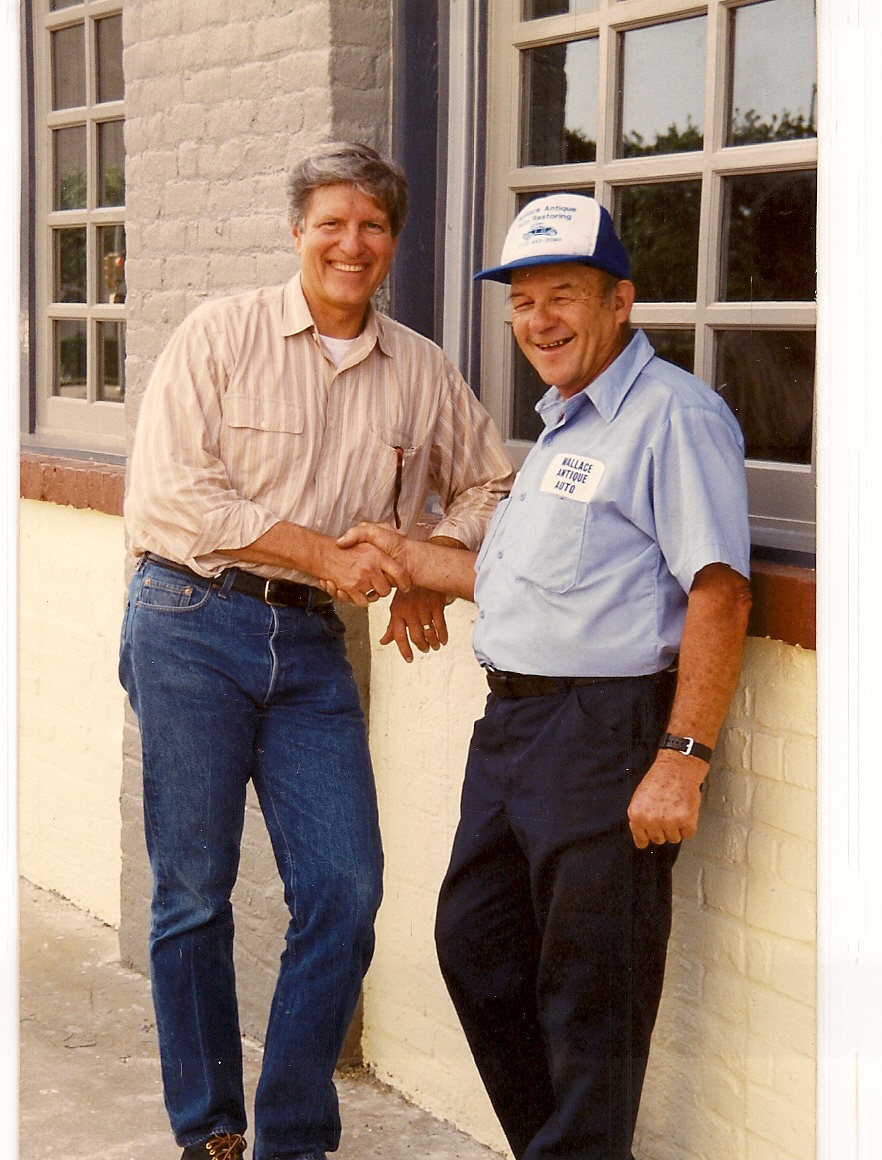
Today, the car is the prized possession of car collector Lendell Martin of Houston. Martin relates that he no longer is able to drive the car, due to his advanced age, “But I sure love looking at it.” Although Martin has a collection of more than 100 spectacular classics at two museum sites, the 1936 Cadillac occupies a special place at his home.
Comments are closed.
Hi, this is a comment.
To delete a comment, just log in and view the post's comments. There you will have the option to edit or delete them.
fantastic story of a fine auto
Thank you for your kind words.